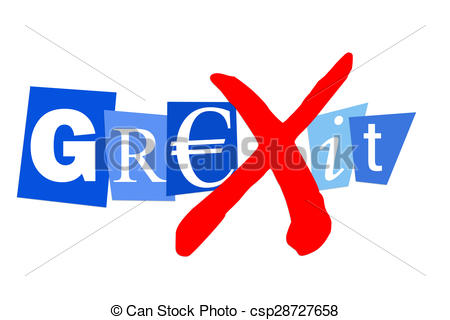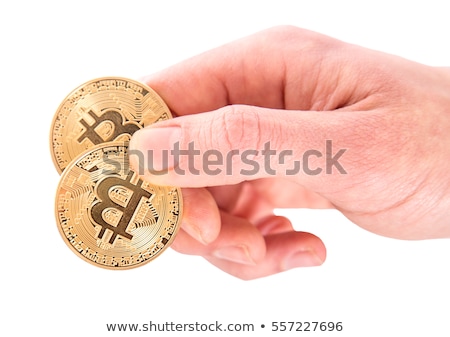
This means that Netflix would have to decline by $12.55 or 14% before the put position would become profitable. There are two types of volatility—historical volatility (or realized volatility) and implied volatility. A maximum drawdown may be quoted in dollars or as a percentage of the peak value. When comparing securities, understand the underlying prices as dollar maximum drawdowns may not be a fair comparable base.
- Once expected returns of a portfolio reach a certain level, an investor must take on a large amount of volatility for a small increase in return.
- How volatility is measured will affect the value of the coefficient used.
- Volatility is a measurement of price movement, and it’s fundamental to how the stock market works.
- Standard deviation measures the dispersion of data values from their mean.
- But in the end, you must remember that market volatility is a typical part of investing, and the companies you invest in will respond to a crisis.
For example, a stock with a beta of 1.2 could be expected to rise by 1.2% on average if the S&P rises by 1%. On the other hand, a beta of less than one implies a stock that is less reactive to overall market moves. And, finally, a negative beta (which is quite rare) tells investors that a stock tends to move in the opposite direction from the S&P 500.
Volatility: Meaning In Finance and How it Works with Stocks
The more uncertainty about an asset’s value, the more its price fluctuates. Most of the time, the stock market is fairly calm, interspersed with briefer periods of above-average market volatility. Stock prices aren’t generally bouncing around constantly—there are long periods of not much excitement, followed by short periods with big moves up or down. These moments skew average volatility higher than it actually would be most days. For example, a lower volatility stock may have an expected (average) return of 7%, with annual volatility of 5%.
A stock with a price that fluctuates wildly—hits new highs and lows or moves erratically—is considered highly volatile. A stock that maintains a relatively stable price has low volatility. A highly volatile stock is inherently riskier, but that risk cuts both ways. When investing in a volatile security, the chance for success is increased as much as the risk of failure. For this reason, many traders with a high-risk tolerance look to multiple measures of volatility to help inform their trade strategies.
Volatility is determined either by using the standard deviation or beta. Standard deviation measures the amount of dispersion in a security’s prices. Beta determines a security’s volatility relative to that of the overall market. Volatility is a key variable in options pricing models, estimating the extent to which the return of the underlying asset will fluctuate between now and the option’s expiration. Volatility, as expressed as a percentage coefficient within option-pricing formulas, arises from daily trading activities. How volatility is measured will affect the value of the coefficient used.

Anyone who has laid eyes on a stock graph has seen the visual representation of volatility. It is the up and down movement in price that spans the width of the screen. Extreme weather, such as hurricanes, can send gas prices soaring by destroying refineries and pipelines. And volatility is a useful factor when considering how to mitigate risk.
Tips on Managing Volatility
Because market volatility can cause sharp changes in investment values, it’s possible your asset allocation may drift from your desired divisions after periods of intense changes in either direction. That said, let’s revisit standard deviations as they apply to market volatility. Traders calculate standard deviations of market values based on end-of-day trading values, changes to values within a trading session—intraday volatility—or projected future changes in values. To annualize this, you can use the “rule of 16”, that is, multiply by 16 to get 16% as the annual volatility. The rationale for this is that 16 is the square root of 256, which is approximately the number of trading days in a year (252). This also uses the fact that the standard deviation of the sum of n independent variables (with equal standard deviations) is √n times the standard deviation of the individual variables.
Harvest Volatility Management LLC Reduces Stake in Booking … – Best Stocks
Harvest Volatility Management LLC Reduces Stake in Booking ….
Posted: Wed, 13 Sep 2023 07:52:05 GMT [source]
But conflating the two could severely inhibit the earning capabilities of your portfolio. Based on the definitions shared here, you might be thinking that volatility and risk are synonymous. “When the market is down, pull money from those and wait for the market to rebound before withdrawing from your portfolio,” says Benjamin Offit, CFP, an advisor in Towson, Md. Security is a type of financial instrument that holds value and can be traded…
Chaikin Volatility (VT)
HV and IV are both expressed in the form of percentages, and as standard deviations (+/-). If you say XYZ stock has a standard deviation of 10%, that means it has the potential to either gain or lose 10% of its total value. You also may want to rebalance if you see a deviation of greater than 20% in an asset class. Standard deviations are important because not only do they tell you how much a value may change, but they also provide a framework for the odds it will happen.
We also lead volunteer service activities for employees in local communities by utilizing our many resources, including those that stem from access to capital, economies of scale, global reach and expertise. We are a leader in investment management, dedicating to creating a strategic advantage for institutions by connecting clients with J.P. Upgrading to a paid membership gives you access to our extensive collection of plug-and-play Templates designed to power your performance—as well as CFI’s full course catalog and accredited Certification Programs. Take your learning and productivity to the next level with our Premium Templates.
When the going is good—lots of good news, strong economic growth, healthy investment portfolios—investors tend to become complacent. Then out of nowhere, something spooks el chapo meaning the markets and sends them sharply lower and highly variable. Such abrupt moves, known as market volatility, can wreak havoc on your portfolio (and your emotions).
Traders can also trade the VIX using a variety of options and exchange-traded products, or they can use VIX values to price certain derivative products. The greater the volatility, the higher the market price of options contracts across the board. For example, Netflix (NFLX) closed at $91.15 on https://1investing.in/ January 27, 2016, a 20% decline year-to-date, after more than doubling in 2015. Traders who are bearish on the stock could buy a $90 put (i.e., strike price of $90) on the stock expiring in June 2016. The implied volatility of this put was 53% on January 27, 2016, and it was offered at $11.40.
What Does Stock Market Volatility Mean?
In general, when volatility is rising in the stock market, it can signal increased fear of a downturn. For the entire stock market, the Chicago Board Options Exchange (CBOE) Volatility Index, known as the VIX, is a measure of the expected volatility over the next 30 days. The number itself isn’t terribly important, and the actual calculation of the VIX is quite complex.
Harvest Volatility Management LLC Reduces Stake in Marriott … – Best Stocks
Harvest Volatility Management LLC Reduces Stake in Marriott ….
Posted: Wed, 13 Sep 2023 07:18:11 GMT [source]
That includes bonds, cash, cash values in life insurance, home equity lines of credit and home equity conversion mortgages. Historically, the normal levels of VIX are in the low 20s, meaning the S&P 500 will differ from its average growth rate by no more than 20% most of the time. Periods when prices fall quickly (a crash) are often followed by prices going down even more, or going up by an unusual amount. Also, a time when prices rise quickly (a possible bubble) may often be followed by prices going up even more, or going down by an unusual amount. For simplicity, let’s assume we have monthly stock closing prices of $1 through $10.
If the options prices start to rise, that means implied volatility is increasing, all other things being equal. Economists developed this measurement because the prices of some stocks are highly volatile. As a result, investors want a higher return for the increased uncertainty.

Market volatility can also be seen through the Volatility Index (VIX), a numeric measure of broad market volatility. The VIX was created by the Chicago Board Options Exchange as a measure to gauge the 30-day expected volatility of the U.S. stock market derived from real-time quote prices of S&P 500 call-and-put options. It is effectively a gauge of future bets investors and traders are making on the direction of the markets or individual securities. The VIX—also known as the “fear index”—is the most well-known measure of stock market volatility. It gauges investors’ expectations about the movement of stock prices over the next 30 days based on S&P 500 options trading. The VIX charts how much traders expect S&P 500 prices to change, up or down, in the next month.
To determine if the proposed fund has an optimal return for the amount of volatility acquired, an investor needs to do an analysis of the fund’s standard deviation. Since volatility is calculated on past prices, it is a measure of how volatile a market or a security has been in the past. Volatility estimates for the future can be derived from options prices, which reflect what investors believe volatility for a specific stock or the market will be going forward. Market volatility is the velocity of price changes for any market. Increased volatility of the stock market is usually a sign that a market top or market bottom is at hand.
It’s a good idea to rebalance when your allocation drifts 5% or more from your original target mix. Market volatility isn’t a problem unless you need to liquidate an investment, since you could be forced to sell assets in a down market. That’s why having an emergency fund equal to three to six months of living expenses is especially important for investors. The volatility of stock prices is thought to be mean-reverting, meaning that periods of high volatility often moderate and periods of low volatility pick up, fluctuating around some long-term mean. Continuing with the Netflix example, a trader could buy a June $80 put at $7.15, which is $4.25 or 37% cheaper than the $90 put.
Doug is a Chartered Alternative Investment Analyst who spent more than 20 years as a derivatives market maker and asset manager before “reincarnating” as a financial media professional a decade ago. To help investors predict volatility in the S&P 500 Index, the Chicago Board Options Exchange operates a Volatility Index (VIX). As a rule of thumb, a beta of less than 1 indicates the security is less volatile than the benchmark. A beta of more than 1 indicates the security is more volatile than the benchmark. J.P. Morgan’s Research team leverages cutting-edge technologies and innovative tools to bring clients industry-leading analysis and investment advice.
To determine how well a fund is maximizing the return received for its volatility, you can compare the fund to another with a similar investment strategy and similar returns. The fund with the lower standard deviation would be more optimal because it is maximizing the return received for the amount of risk acquired. Remember, because volatility is only one indicator of the risk affecting a security, a stable past performance of a fund is not necessarily a guarantee of future stability. Since unforeseen market factors can influence the volatility, a fund with a standard deviation close or equal to zero this year may behave differently the following year.

